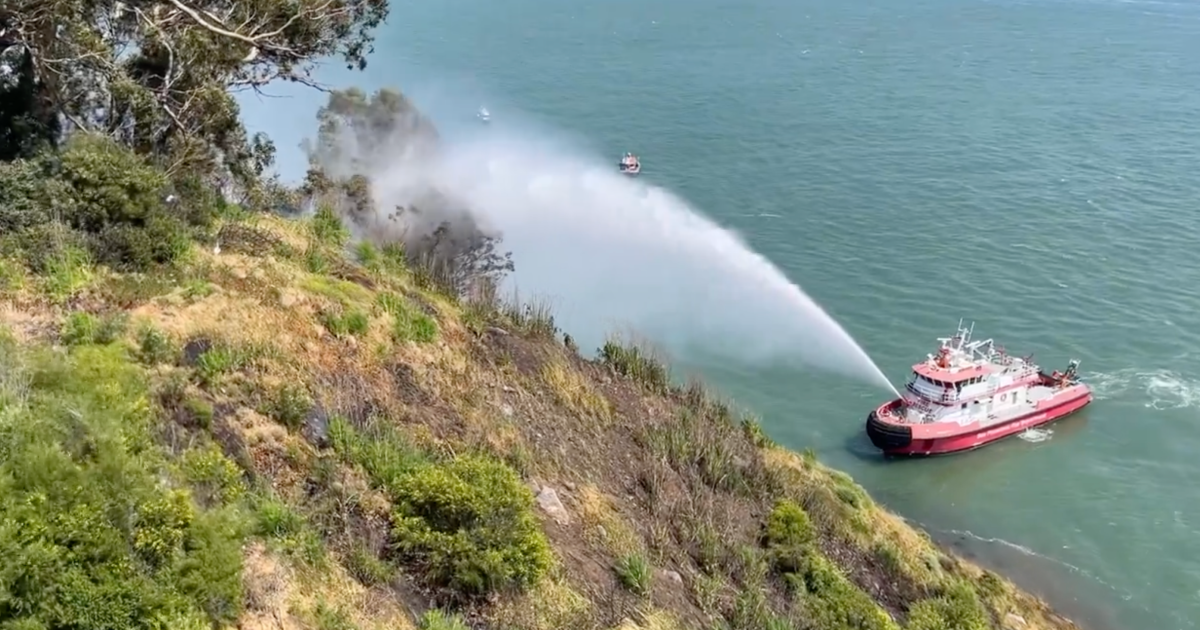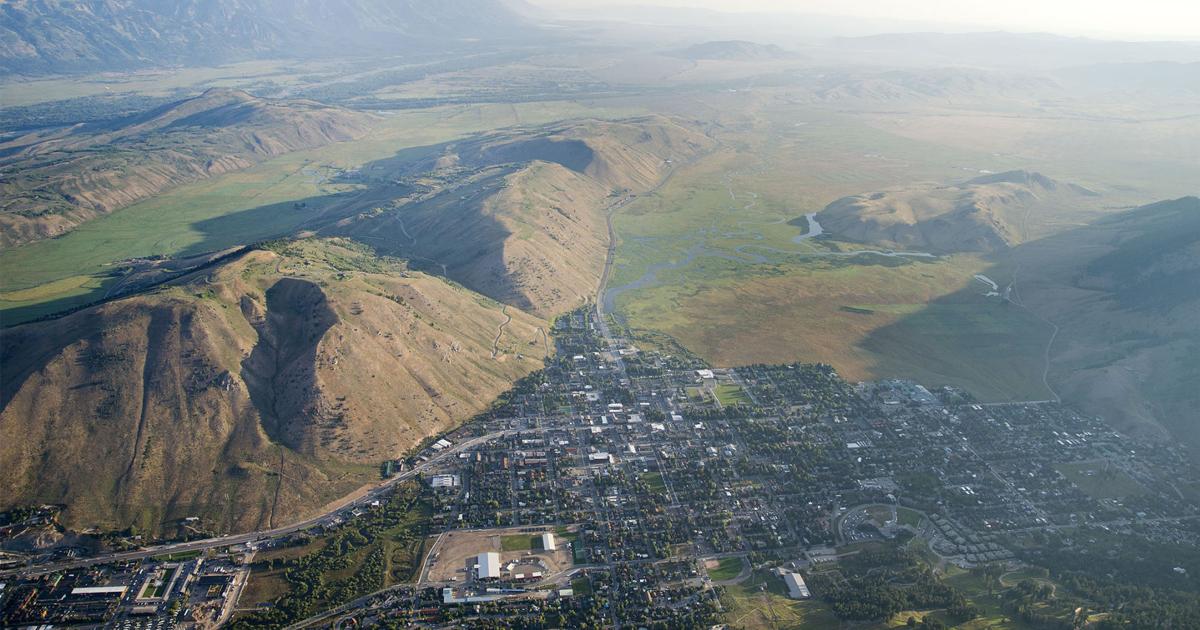It’s time to take a look at what’s happening around Wyoming! I’m Wendy Corr, bringing you headlines from the Cowboy State Daily newsroom, for Monday, May 6th.
Upon hearing the phrase “air-dropping grizzlies,” a layperson’s mind might go wild with images of huge, roaring bears parachuting from the sky.
The reality isn’t quite that crazy, but outdoors reporter Mark Heinz says if all goes as planned, perhaps some Wyoming grizzlies could find themselves slung under helicopters, in a drug-induced stupor, on the last leg of their journey to a new home in Washington state.
“If anybody ever saw the movie Operation Dumbo drop, where they dropped an elephant with a parachute, it’s not going to be that fun. It’s pretty mundane, basically it just means they’re going – just as they would move grizzlies into some areas with trucks, it’s the same thing, except they use an aircraft. So the grizzly is put inside a cage or container – they’re tranquilized, of course, and then put inside a cage or container of some sort. And then they’re taken by aircraft to the location, and then allowed to wake up and get their bearings a little bit and then released. So sorry, folks, if you thought I was gonna have a story about Grizzlies dropping from the sky in parachutes.”
The U.S. Fish and Wildlife Service and other federal agencies have said that air-dropping bears will likely be the preferred method of getting new grizzlies to remote locations in Washington’s North Cascades Ecosystem.
Hot Springs State Park is the most visited state park in Wyoming. The state of Wyoming recently asked potential investors to dream big about the park’s future,
and Cowboy State Daily’s Renee Jean reports that the state is willing to put a large chunk of money behind any improvements.
“The state is proposing to spend about $25 million there on upgrades, but that’s just a drop in the bucket compared to what its selected partner, Wyoming LLC, would be putting into the park. Their punch list includes really big projects – reconstructing the Hot Springs Hotel so that it has a convention center, positioning that so that the rooms, the motel rooms face the river instead of the parking lot. They’d reconstruct the teepee pools and turn that into kind of an adult oriented Wellness Center. The Star Plunge would keep its mid century historic theme, but it would get a poolside diner, kid friendly water features like slides and swimming pools. And then some of the other things they talked about possibly doing – adding a drive in theater, a brew pub, you know, the specific details of that are going to be worked out in upcoming negotiations. They’ll have to sign a long term lease with the state in order to do the project.”
The park has long laid claim to being the world’s largest mineral hot springs, and draws upward of 1.2 million to 1.9 million visitors a year.
The Medicine Lodge State Archaeological Site, located near Hyattville in the Bighorn Basin, just completed the installation of a first-of-its-kind educational experience. And Cowboy State Daily’s Andrew Rossi says it’s a mind-blowing integration of technology and culture that immerses visitors in thousands of years of indigenous history through seasons, sights and sound.
“At medicine Lodge, they felt they were telling the story of the archeology, the history, and the wildlife that are there now, but they didn’t really have a way to tell the cultural story. And the culture of medicine lodge goes back for 1000s upon 1000s of years. So the cultural experience is just that it’s an experience. It’s not a museum exhibit, or like anything else that a lot of people probably experienced because the best way to experience culture is to have culture experience with you with the people who created it. And that’s exactly what the cultural experience is. It’s been several years in the making. And it’s an entirely unique thing and Wyoming possibly the United States because it lets the culture tell its own story.”
The Medicine Lodge Cultural Experience will officially open to visitors later this spring.
A local effort to establish passenger trail service connecting Cheyenne to Colorado’s Front Range may seem a pipe dream to some, but an effort to make it happen has been gaining momentum, according to Cowboy State Daily’s Leo Wolfson.
“Supporters of this project have been coordinating with the Front Range passenger rail project to kind of try to kind of hop on to that effort, which is basically a rail service that would connect Fort Collins through Denver and south to Pueblo. They are hoping in Cheyenne that there could be an extension built on to this project to connect Cheyenne to Fort Collins. It’s a really interesting effort and one that is possibly gaining steam, especially considering there’s going to be a ballot initiative going before the Colorado voters this November, that would provide a significant amount of funding for the rail line through a tax if if it is passed by the voters, which would really open up a door for the Cheyenne extension on the project.”
Under the best case scenario, the project would still be three to five years off, but Wolfson says supporters are trying to explore different options for different carriers, which could include Amtrak.
Updates to the Biden administration’s Western Solar Plan would allow more streamlined development of utility scale solar farms in Wyoming, which means more money being invested in solar farms here. But critics feel the Bureau of Land Management, which would oversee the project, isn’t considering all the options, according to energy reporter Pat Maio.
“They feel that the BLM is overlooking what is called distributed generation. So what is that? That is, like solar panels on parking canopies on tops of roofs of buildings. Suggestions are being made to build solar farms on top of abandoned coal mines, things of that sort. That’s distributed generation. The BLM doesn’t seem to be considering that, though – they seem to be kind of moving in a different direction where they would just build these huge agrivoltaic farms, you know, that would involve maybe sheep grazing underneath the panels and so forth, and cattle too.”
The plan is meant to serve as a road map for solar development in areas where the BLM doesn’t think dangers will be posed to local habitats.
Stacy Boisseau and her daughters have been the first in line to enter Yellowstone National Park through the East Entrance on opening day of the summer season for six years running. She did it again Friday, and Cowboy State Daily’s Andrew Rossi was there.
“Stacey and her daughters thought, why not be the first family in the park? And it’s just a tradition that they’ve kept going. And they say, they don’t plan on doing it every year. They like doing it every year, but it’s kind of an impulsive decision. They just decide a couple days before if they want to do it, and then they pack up the car, make all their plans and head up there. They won’t give me exactly the time that they get there to make sure they are there first but they get there early. And it is a long night in the chilly region of the east entrance. But they do it, not be to be first – they do it because it’s a fun tradition that they’ve developed, where they get to spend time with and enjoy each other, as a family wants to do.”
There will be a time when Boisseau and her family won’t be at the front of the line. But for one more year, they were together with an empty road in front of them, soon filled with more laughter and memories.
And that’s today’s news. Get your free digital subscription to Wyoming’s only statewide newspaper by hitting the subscribe button on cowboystatedaily.com. And don’t forget to subscribe to our YouTube channel! I’m Wendy Corr, for Cowboy State Daily.
Radio Stations
The following radio stations are airing Cowboy State Daily Radio on weekday mornings, afternoons and evenings. More radio stations will be added soon.
KYDT 103.1 FM – Sundance
KBFS 1450 AM — Sundance
KYCN 1340 AM / 92.7 FM — Wheatland
KZEW 101.7 FM — Wheatland
KANT 104.1 FM — Guernsey
KZQL 105.5 FM — Casper
KMXW 92.5 FM — Casper
KBDY 102.1 FM — Saratoga
KTGA 99.3 FM — Saratoga
KJAX 93.5 FM — Jackson
KZWY 106.3 FM — Sheridan
KROE 930 AM / 103.9 FM — Sheridan
KWYO 1410 AM / 106.9 FM — Sheridan
KYOY 92.3 FM Hillsdale-Cheyenne / 106.9 FM Cheyenne
KRAE 1480 AM — Cheyenne
KDLY 97.5 FM — Lander
KOVE 1330 AM — Lander
KZMQ 100.3/102.3 FM — Cody, Powell, Medicine Wheel, Greybull, Basin, Meeteetse
KKLX 96.1 FM — Worland, Thermopolis, Ten Sleep, Greybull
KCGL 104.1 FM — Cody, Powell, Basin, Lovell, Clark, Red Lodge, MT
KTAG 97.9 FM — Cody, Powell, Basin
KCWB 92.1 FM — Cody, Powell, Basin
KVGL 105.7 FM — Worland, Thermopolis, Basin, Ten Sleep
KODI 1400 AM / 96.7 FM — Cody, Powell, Lovell, Basin, Clark, Red Lodge
KWOR 1340 AM / 104.7 FM — Worland, Thermopolis, Ten Sleep
KREO 93.5 FM — Sweetwater and Sublette Counties
KGOS 1490 AM — Goshen County
KERM 98.3 FM — Goshen County
Check with individual radio stations for airtime of the newscasts.







































